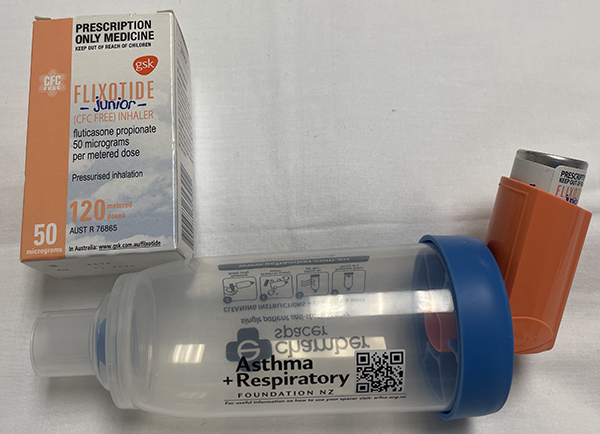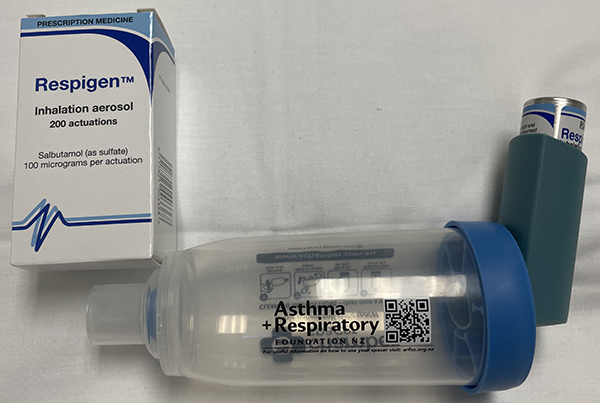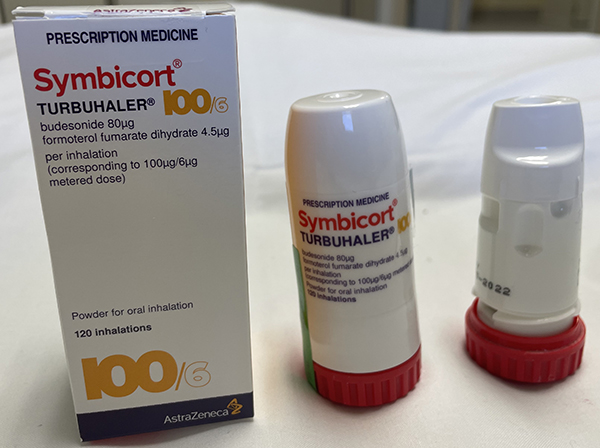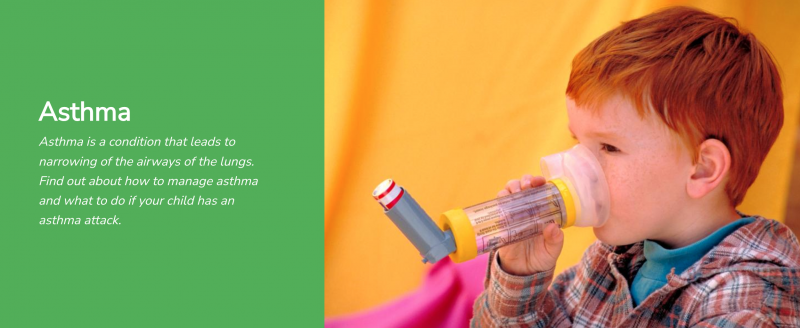Asthma Medicines For Children
Asthma Medicines For Children
There are different types of medicines to treat asthma in tamariki. The medicines your child needs will depend on their symptoms and how often they get them. Ask your doctor to fill out an asthma action plan for your child so you know what medicines they need to take and when.
Key points about asthma medicines
- inhalers (puffers) are the most common medicine for children with asthma
- there are 2 types of inhalers - relievers and preventers
- asthma medicines help to relax and open the airways and to reduce the swelling inside them
- some tamariki may also need extra medicines to help control their asthma
What are the different asthma inhaler medicines?
There are different inhaler medicines to treat asthma. What your child needs will depend on how bad their symptoms are and how often they get symptoms.
An asthma inhaler is a plastic case that has asthma medicine inside it. The inhaler delivers the medicine into the lungs.
Preventers
Preventers reduce the chance of your child having an asthma attack. Talk to your doctor about whether your child should be on a preventer. Preventer medicines help reduce swelling and narrowing in the airways.
Preventers work slowly to help improve your child's asthma symptoms. Your child won't notice any instant change in how they feel. For preventers to work, your child needs to take them every day.
Your child will always need to use a spacer with their preventer.
Find out about spacers for asthma inhalers.
Examples of preventer medicines
Flixotide (fluticasone)

Pulmicort (budesonide)

Relievers
Reliever medicines relax the muscles in the airway when they are tight. This helps your child to breathe more easily.
Reliever medicines work quickly, and their effect can last for up to 4 hours. Use a reliever if your child has wheezing, tightness in the chest or coughing.
Reliever medicines can help your child to feel better quickly. They do not treat the underlying cause of asthma symptoms. If your child needs to use their reliever more than 2 to 3 times a week, talk to your doctor. Your child may need to be on a preventer.
If your child gets asthma symptoms with exercise, your doctor may suggest trying a reliever before exercise.
Relievers work best when used with a spacer.
Examples of reliever medicines
Respigen (salbutamol)

Salair (salbutamol)

Another reliever medicine is Ventolin (salbutamol).
Combination inhalers
Combination inhalers contain both preventer and reliever medicines. They help to relieve asthma symptoms and prevent asthma attacks.
They need to be used every day, even if your child feels well. Some combination inhalers can be used during an asthma attack. Ask your doctor to fill out an asthma action plan for your child. It's important that you understand which inhaler to use in different situations.
Some children need a different reliever during asthma attacks.
Examples of combination inhalers
Symbicort (budesonide with formoterol)

Seretide (fluticasone with salmeterol)

Why do inhalers look different?
There are different types of inhalers - metered dose inhalers and dry powder inhalers.
- they deliver the medicine in different ways
- they look different
- you need to use a different technique to deliver the medicine depending on which inhaler your child uses
Most inhalers for children - relievers and preventers - are metered dose inhalers. You need to use them with a spacer.
Metered dose inhaler (MDI) with a spacer
A metered dose inhaler (MDI) delivers a set amount of medicine when you press the top of the inhaler.
Watch Lachlan showing how to use an MDI inhaler with a spacer (Asthma Waikato video)
Check KidsHealth for more information about using spacers for asthma inhalers
Dry powder inhaler
Some older children can use a dry powder inhaler. These contain medicine in a powder form. This inhaler does not need a spacer.
You do not need to shake this inhaler before your child uses it. The child breathes in the medicine directly from the inhaler’s mouthpiece. Ask your doctor, nurse or pharmacist to show you how to use the inhaler to make sure your child is comfortable with it and using it correctly.
Watch this video about how to use a Turbuhaler - a common dry powder inhaler. (Video by Healthify NZ and Te Toka Tumai Auckland 2018).
Asthma medicines other than inhalers
Oral steroids
If your child's asthma symptoms are not settling with inhalers, they may need steroids. Oral steroids come as tablets or a liquid. Only some tamariki with asthma will need oral steroids - usually for 3 to 5 days. Your child will need to continue with their usual inhalers. Oral steroids improve the swelling inside your child's airways. They can reduce the amount of mucus in the airways.
Examples of oral steroids include:
- Redipred (prednisolone)
Find out more about Redipred (prednisolone) for an asthma attack.
Other medicines
There are some other medicines, such as montelukast that are helpful for some children with asthma.
Find out more about montelukast for asthma.
Does my child need an asthma action plan?
Your child's doctor or nurse can help you put together an asthma action plan. This will be specific to your child. The action plan will help you to manage your child's daily symptoms as well as what to do if they have an asthma attack.
There are very good asthma treatments available. You can stop asthma from interfering with your child's life, including enjoyment of sports and play.
Take a look at the Asthma and Respiratory Foundation website for an example of what a blank asthma plan looks like (it's available in English, te reo Māori, Samoan and Tongan). You can fill this in with your child's healthcare team.
Having an asthma action plan means you can be confident to use the medicines your child needs for their asthma. This is both for their day-to-day symptoms as well as during an asthma attack. It is a good idea to review the asthma plan every year.
The Asthma and Respiratory Foundation website also has more about how asthma medicine is delivered.
See the KidsHealth page on managing asthma attacks for more information
See the KidsHealth page on asthma to learn more about the condition
See more KidsHealth content on asthma
This page last reviewed 26 June 2023.
Do you have any feedback for KidsHealth?
If you have any feedback about the KidsHealth website, or have a suggestion for new content, please get in touch with us.
Email us now

